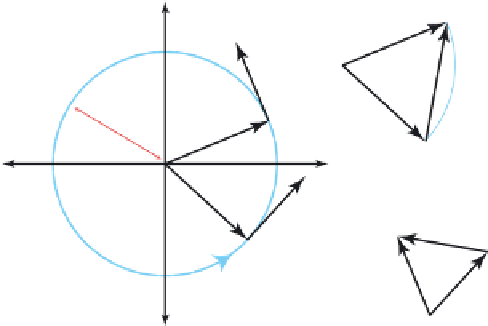Game Development Reference
In-Depth Information
11.8
Uniform Circular Motion
Enough calculus—let's get back to physics. This section studies the motion
of a particle moving in a circle at a constant speed. We study the motion
of a particle because many physics calculations can be simplified by repre-
senting a rigid body as a point mass at its so-called center of mass. Since
a circular path is inherently restricted to a plane, Section 11.8.1 begins our
investigation in two dimensions. After establishing the basic relations,
Sec-
arbitrarily oriented in three dimensions.
11.8.1
Uniform Circular Motion in the Plane
A particle traveling in a circle with constant speed does not have constant
velocity; if it did, it would travel in a straight line. Since the object's ve-
locity is changing over time, it must be under some sort of acceleration.
Let's see if we can determine what that is. Consider an object moving at
constant speed s in a circular path of radius r. To make our calculations
easier, and without loss of generality, we establish a two-dimensional refer-
ence frame that lies in the plane of motion and has its origin at the center
of the circle. Remember that the instantaneous velocity
v
(t) of a particle
is always tangent to its trajectory, so the velocity vector at any given point
will always be tangent to the circle at that point. Also, from the definition
of speed, we know that
v
(t) = s.
P
(
T + T
)
P
=
P
(
T + T
)
P
(
T
)
V
(
T + T
)
R
P
(
T + T
)
R
P
(
T
)
V
(
T
)
V
=
V
(
T + T
)
V
(
T
)
P
(
T
)
V
(
T + T
)
V
(
T
)
Figure 11.14.
Uniform circular motion









Search WWH ::

Custom Search